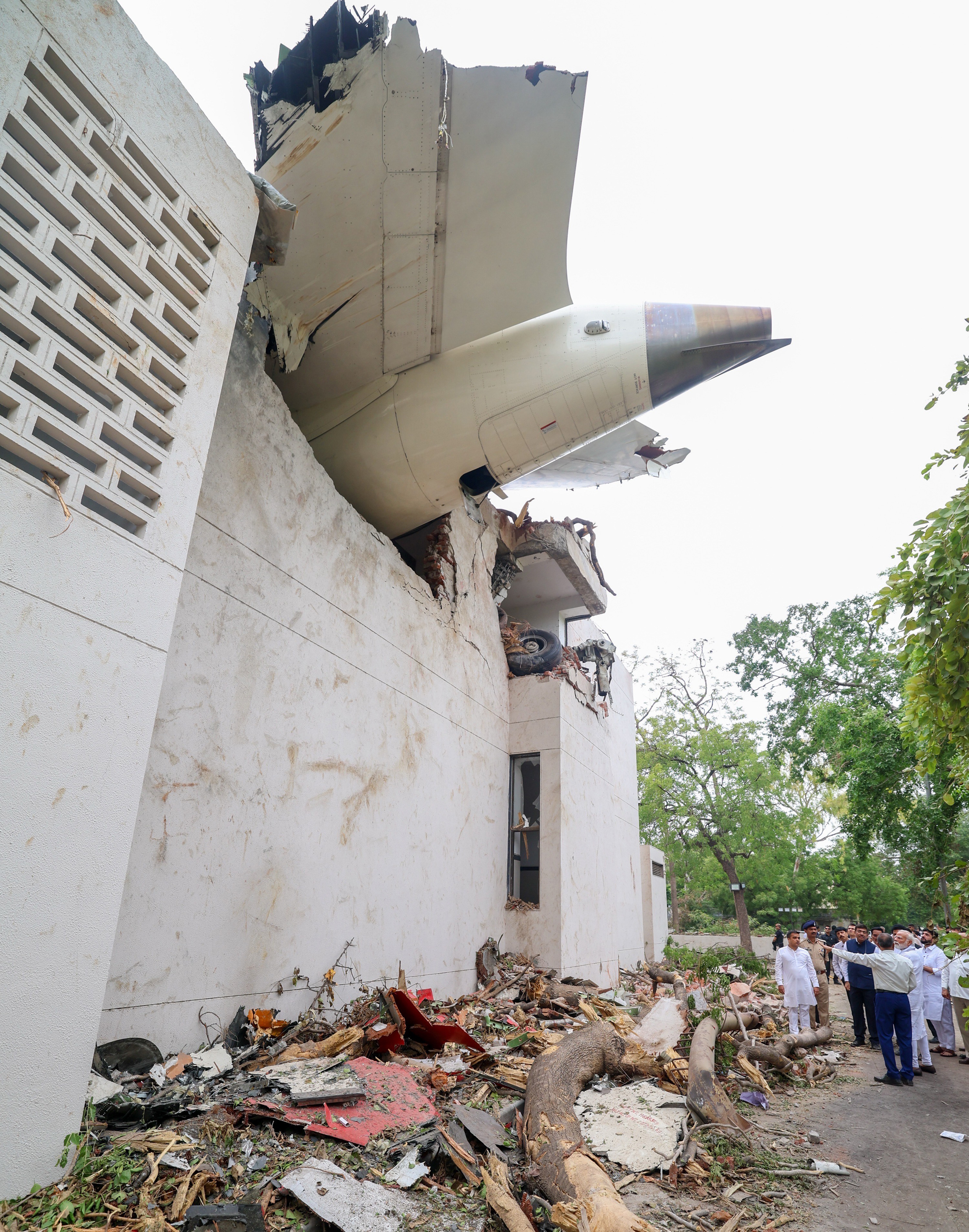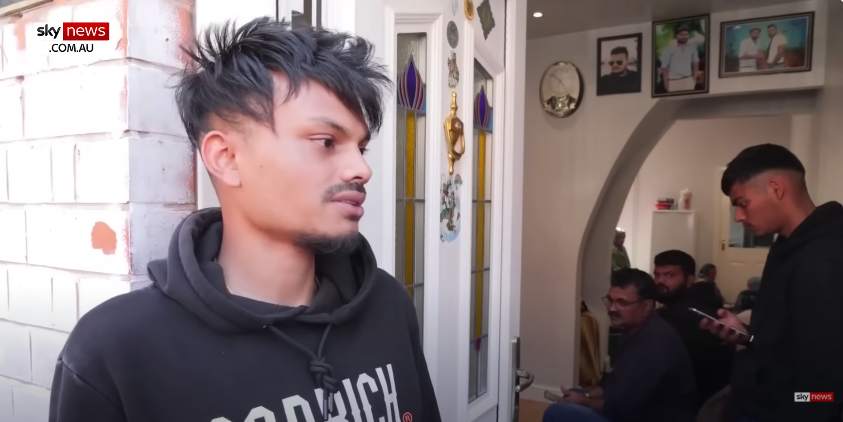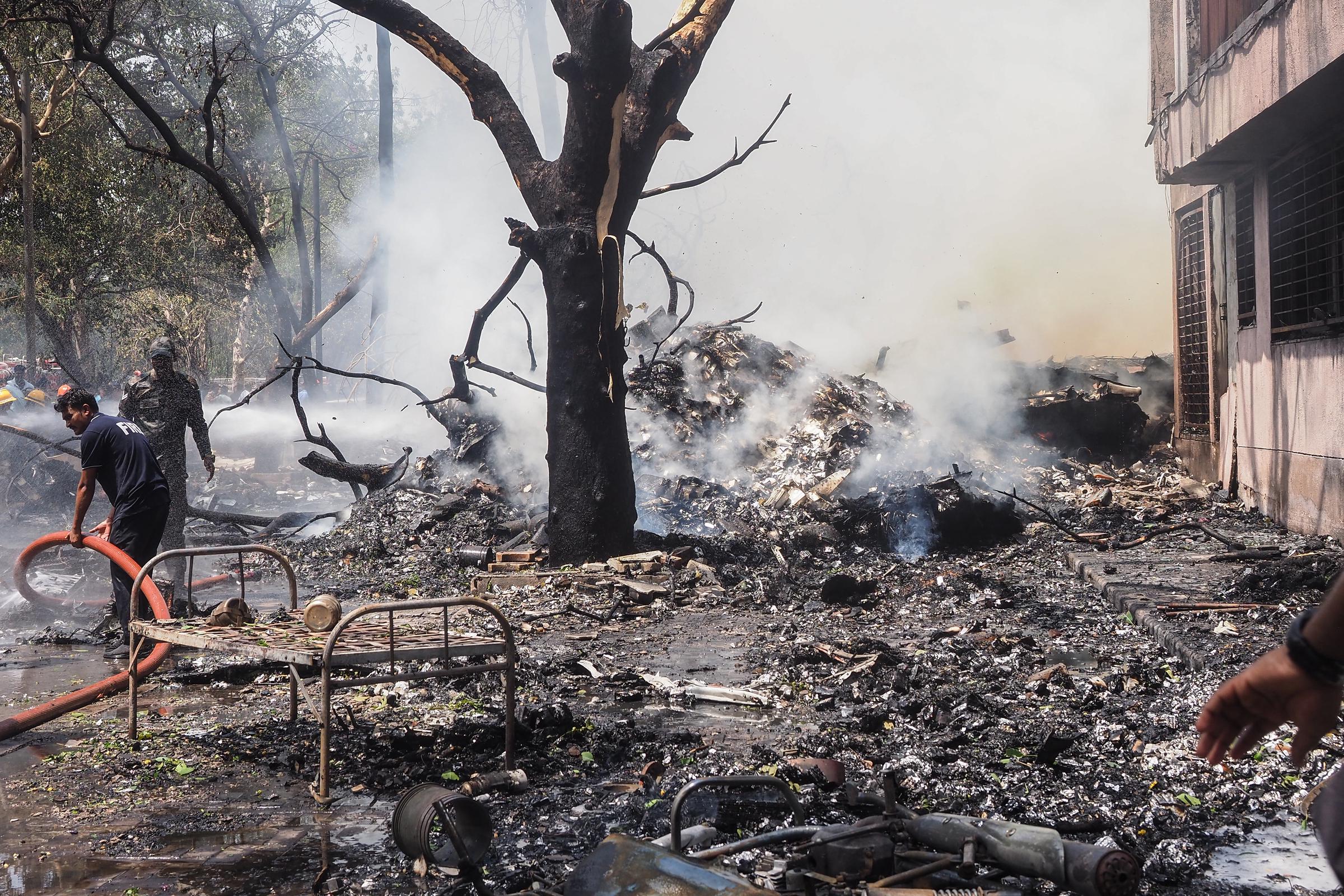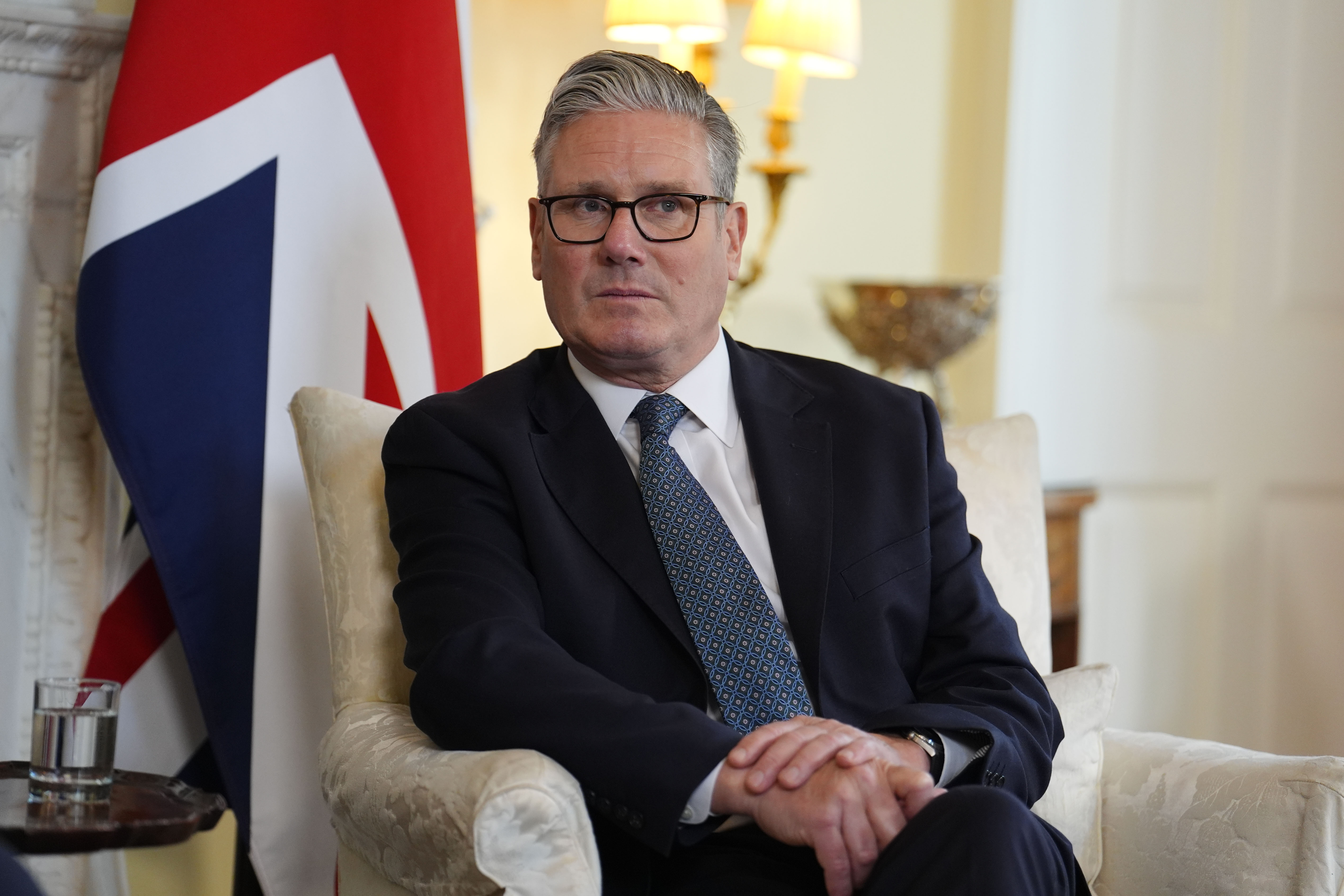
The Only Known Surviving Passenger of Air India Crash Travelled with His Brother – Details
What began as a routine return from a business trip turned into a nightmare in the sky. Amid the chaos and flames, one man survived — his first words were a desperate plea for the brother he could no longer see.
Ajaykumar Ramesh, 35, and his brother Vishwash Ramesh, 40, had just completed their business trip in India and were returning to the UK. They boarded Air India's flight from Ahmedabad to London on Thursday, unaware of the tragedy that lay ahead. They took their seats, with Ajay settling in 11J and Vishwash across the aisle in 11A, near the emergency exit.
Then came the crash.

Vishwash Ramesh on a hospital bed from a video posted on June 13, 2025 | Source: YouTube/SkyNewsAustralia
Vishwash lived through what investigators now call a catastrophic crash, while his brother, Ajay, did not, as flames consumed the cabin. Vishwash, bloodied and disoriented, was pulled from the wreckage.
Now in an Indian hospital, Vishwash keeps repeating one haunting plea: "Find Ajay, you must find Ajay."

Vishwash Ramesh, the sole survivor of the doomed Indian flight, seen walking away from the crash, from a video posted on June 13, 2025 | Source: YouTube/SkyNewsAustralia
Back in Leicester, their family is caught between disbelief and grief. Their mother, too distraught to speak, remains surrounded by relatives offering comfort. Their youngest brother, Nayankumar Ramesh, described the surreal moment they received the call.
"It's a miracle at least one of them survived," he stated. "He [Vishwash] said his plane had crashed and he couldn’t find anyone. We couldn't believe it. There was blood running down his face."

Nayankumar Ramesh speaks after the Air India crash that left one of his brothers alive and another presumed dead. from a video posted on June 13, 2025 | Source: YouTube/SkyNewsAustralia
Photos taken in the Indian hospital show Vishwash's injuries. Nayan said the family is preparing to fly out, desperate for answers. He added that Ajay's phone still rings, but no one picks up.
Air India confirmed the grim reality late Thursday night: of the 242 people aboard flight AI171, only one survived. That sole survivor was Vishwash.
For hours, the family clung to hope. They believed Ajay might have been rushed to a different hospital, his name missed in the confusion.

Following the Air India tragedy, Nayankumar Ramesh addresses the press about his surviving and lost brothers from a video posted on June 13, 2025 | Source: YouTube/SkyNewsAustralia
Nayan had said earlier that they were "so confused" but still hoped his brother had somehow made it out alive. When asked how the family was coping with the ordeal — one brother surviving while another lost — Nayankumar motioned to their mother, Manibai Ramesh. She was too overwhelmed to speak, her sobs filling the silence.
"That's your answer," he said. "We're just baffled, baffled." Despite the heartbreak, he acknowledged the cruel duality of the moment: "It's a miracle at least one of them survived."

Nayankumar Ramesh talks to reporters after one brother survived and another perished in the Air India crash from a video posted on June 13, 2025 | Source: YouTube/SkyNewsAustralia
Ajay and Vishwash had traveled to India on business tied to their family's ventures. Vishwash had previously served as director of RMV Fashion, a Leicester-based textile company that closed in 2022.
The first signs of life came when Vishwash called home. He told relatives he had fled the burning aircraft and was safe, though injured. The call brought a wave of relief — but also deepened the fear for Ajay, who never got in touch.
Their cousin, Ajay Valgi, also from Leicester, shared his anguish. He described Ajaykumar not just as a cousin, but as one of his closest friends. "They were sitting next to each other,” he said. "But we don't know what happened to Ajay." The family is still reeling. "We're not doing well," he added. "We're all upset."
We previously reported that the devastating tragedy unfolded in Ahmedabad on Thursday afternoon, June 12, 2025, when Air India Flight AI-171 crashed shortly after takeoff, leaving the nation in shock and sorrow. The Boeing 787 Dreamliner, carrying 242 passengers and crew members, was en route to London Gatwick when it suddenly encountered trouble.
Commanding the aircraft was Captain Sumeet Sabharwal, who issued an urgent Mayday call — the most severe emergency signal in aviation — moments before all contact with Air Traffic Control (ATC) was lost.
The distress call, which is internationally recognized and must be repeated three times for clarity and priority handling — "Mayday, Mayday, Mayday" — marked the pilot's final communication before the plane vanished from radar. Despite repeated efforts from ATC to reconnect, there was no further response from the cockpit, as confirmed by the Directorate General of Civil Aviation (DGCA).
At approximately 1:39 p.m. IST, the aircraft crashed into the Meghani Nagar neighborhood, a residential area with a population of five million just outside the airport's perimeter. The incident occurred just five minutes after takeoff.
The plane crash site erupted in flames and was soon engulfed in thick, black smoke that towered over the city skyline. Emergency response teams rushed to the scene immediately, launching a rescue operation amid the wreckage.
The term "Mayday" itself has a poignant origin. Coined in the early 1920s by Frederick Stanley Mockford, a radio officer at London's Croydon Airport, it is derived from the French phrase "m'aider," which means "help me."
Alongside the Morse code "SOS" signal, the International Radiotelegraph Convention adopted the term as the standard voice distress call for both aircraft and vessels around the world by 1927.
Aviation professionals rely on Mayday calls to signal the most critical emergencies in flight, including engine failures, structural malfunctions, fires, severe weather conditions, or serious medical incidents onboard. Mayday is different from less severe distress calls like "Pan-pan," which address technical problems that don't immediately endanger lives.
When a pilot issues a Mayday call, they typically provide key details, including the aircraft's identification, location, nature of the emergency, number of people on board, remaining fuel, and the type of assistance required.
This structured format enables air traffic controllers and emergency responders to act swiftly and effectively. Once a Mayday call is received, all non-urgent radio communications are halted, giving the distressed aircraft absolute priority.
ATC then coordinates with emergency services, other aircraft, and nearby airports to provide full support. The Federal Aviation Administration (FAA) also advises pilots to provide specific details such as weather conditions, altitude, and flight intentions to enhance the effectiveness of rescue efforts.
In the case of the recent Ahmedabad crash, the crew's swift and accurate Mayday call was a vital step in following emergency protocols.
Though the outcome was tragic, with no known survivors, the transmission offered valuable information for investigators and emergency services, highlighting the professionalism of the flight crew even in the most perilous moments.
Firefighters worked tirelessly to extinguish the flames engulfing the wreckage of Air India Flight AI-171, which had been fully fueled shortly before its takeoff and catastrophic crash. Water was also sprayed on surrounding multistory buildings, one of which bore the plane's tail cone still lodged near its rooftop, stabilizer fins visibly damaged.
The immediate aftermath was marked by horrific scenes — charred bodies lay scattered across the ground, one solemnly carried away by emergency teams.

The devastating aftermath of the Air India plane crash in Ahmedabad on June 12, 2025. | Source: Getty Images
Addressing the tragedy, British Prime Minister Keir Starmer expressed his heartbreak in a public statement, calling the scenes from the crash "devastating."

British Prime Minister Keir Starmer during his meeting with NATO Secretary General Mark Rutte in London, England on June 9, 2025. | Source: Getty Images
Similarly, Indian Prime Minister Narendra Modi described the incident as "heartbreaking beyond words," extending his sympathies to all those affected.
According to Indian television news channels, the aircraft had struck the dining hall of a medical college hostel. Vice President of the Federation of All India Medical Association, Divyansh Singh, reported that at least five students from the medical college were killed on the ground and 50 others were injured, with some in critical condition, and many "feared buried in the debris."
In response to the disaster, medical assistance and relief operations were underway, with help from the Indian Army, which deployed teams to help clear debris and treat the injured.
Air India Chairman Natarajan Chandrasekaran emphasized the airline's commitment to assisting all affected individuals and their families. He noted that emergency centers and support teams had already been activated to ensure the bereaved received timely information and care.
